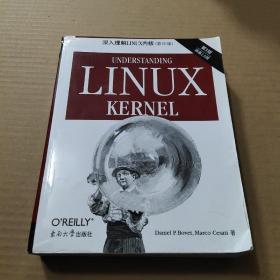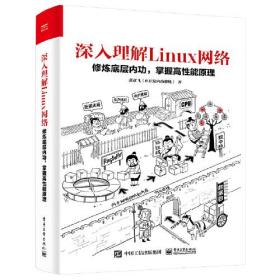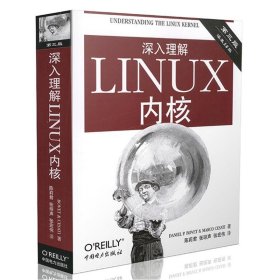
深入理解LINUX内核(影印版第3版涵盖2.6版英文版)
¥ 98 5.8折 ¥ 168 九品
仅1件
重庆渝中
认证卖家担保交易快速发货售后保障
作者[美]丹尼尔·P.博韦、马尔科·西斯特 著
出版社东南大学出版社
出版时间2019-05
版次1
装帧平装
货号C
上书时间2021-11-30
- 在售商品 暂无
- 平均发货时间 15小时
- 好评率 暂无
- 最新上架
商品详情
- 品相描述:九品
图书标准信息
- 作者 [美]丹尼尔·P.博韦、马尔科·西斯特 著
- 出版社 东南大学出版社
- 出版时间 2019-05
- 版次 1
- ISBN 9787564183417
- 定价 168.00元
- 装帧 平装
- 开本 16开
- 纸张 胶版纸
- 页数 923页
- 正文语种 英语
- 【内容简介】
- 为了透彻理解Linux的工作机理,以及为何它在各种系统上能顺畅运行,你需要深入到内核的心脏。cPu与外部世界的所有交互活动都是由内核处理的,哪些程序会分享处理器的时间,以什么样的顺序来分享。内核不遗余力地管理有限的内存,以使数以千计的进程有效地共享系统资源。内核还精心组织数据传送,使得cPu不再受限于慢速硬盘。《深入理解LINUX内核(影印版 第3版 涵盖2.6版 英文版)》将领你畅游内核中用到的主要数据结构、算法和编程技巧。如果你的确想了解计算机内部的实现机理,那么作者透过现象探寻本质,提供了颇有价值的深入分析。《深入理解LINUX内核(影印版 第3版 涵盖2.6版 英文版)》针对具体的Intel平台,讨论了其重要特征,逐行剖析了相关的代码片段。但是,《深入理解LINUX内核(影印版 第3版 涵盖2.6版 英文版)》涵盖的内容不仅仅局限于代码的机理,还解释了Linux运作方式的理论支撑。
- 【目录】
-
Preface
1. Introduction
Linux Versus Other Unix-Like Kernels
Hardware Dependency
Linux Versions
Basic Operating System Concepts
An Overview of the Unix Filesystem
An Overview of Unix Kernels
2. Memory Addressing
Memory Addresses
Segmentation in Hardware
Segmentation in Linux
Paging in Hardware
Paging in Linux
3. Processes
Processes, Lightweight Processes, and Threads
Process Descriptor
Process Switch
Creating Processes
Destroying Processes
4. Interrupts and Exceptions
The Role of Interrupt Signals
Interrupts and Exceptions
Nested Execution of Exception and Interrupt Handlers
Initializing the Interrupt Descriptor Table
Exception Handling
Interrupt Handling
Softirqs and Tasklets
Work Queues
Returning from Interrupts and Exceptions
5. Kernel Synchronization
How the Kernel Services Requests
Synchronization Primitives
Synchronizing Accesses to Kernel Data Structures
Examples of Race Condition Prevention
6. Timing Measurements
Clock and Timer Circuits
The Linux Timekeeping Architecture
Updating the Time and Date
Updating System Statistics
Software Timers and Delay Functions
System Calls Related to Timing Measurements
7. Process Scheduling
Scheduling Policy
The Scheduling Algorithm
Data Structures Used by the Scheduler
Functions Used by the Scheduler
Runqueue Balancing in Muhiprocessor Systems
System Calls Related to Scheduling
8. Memory Management
Page Frame Management
Memory Area Management
Noncontiguous Memory Area Management
9. Process Address Space
The Process's Address Space
The Memory Descriptor
Memory Regions
Page Fault Exception Handler
Creating and Deleting a Process Address Space
Managing the Heap
10. System Calls
POSIX APls and System Calls
System Call Handler and Service Routines
Entering and Exiting a System Call
Parameter Passing
Kernel Wrapper Routines
11. Signals
The Role of Signals
Generating a Signal
Delivering a Signal
System Calls Related to Signal Handling
12. The Virtual Filesystem
The Role of the Virtual Filesystem (VFS)
VFS Data Structures
Filesystem Types
Filesystem Handling
Pathname Lookup
Implementations of VFS System Calls
File Locking
13. I/0 Architecture and Device Drivers
I/0 Architecture
The Device Driver Model
Device Files
Device Drivers
Character Device Drivers
14. Block Device Drivers
Block Devices Handling
The Generic Block Layer
The I/0 Scheduler
Block Device Drivers
Opening a Block Device File
15. The Page Cache
The Page Cache
Storing Blocks in the Page Cache
Writing Dirty Pages to Disk
The sync(), fsync(), and fdatasync() System Calls
16. Accessing Files
Reading and Writing a File
Memory Mapping
Direct I/O Transfers
Asynchronous I/O
17. Page Frame Reclaiming
The Page Frame Reclaiming Algorithm
Reverse Mapping
Implementing the PFRA
Swapping
18. The Ext2 and Ext3 Filesystems
General Characteristics of Ext2
Ext2 Disk Data Structures
Ext2 Memory Data Structures
Creating the Ext2 Filesystem
Ext2 Methods
Managing Ext2 Disk Space
The Ext3 Filesystem
19. Process Communication
Pipes
FIFOs
System V IPC
POSIX Message Queues
20. Program Execution
Executable Files
Executable Formats
Execution Domains
The exec Functions
A. System Startup
B. Modules
Bibliography
Source Code Index
Index
点击展开
点击收起
相关推荐
— 没有更多了 —



























以下为对购买帮助不大的评价